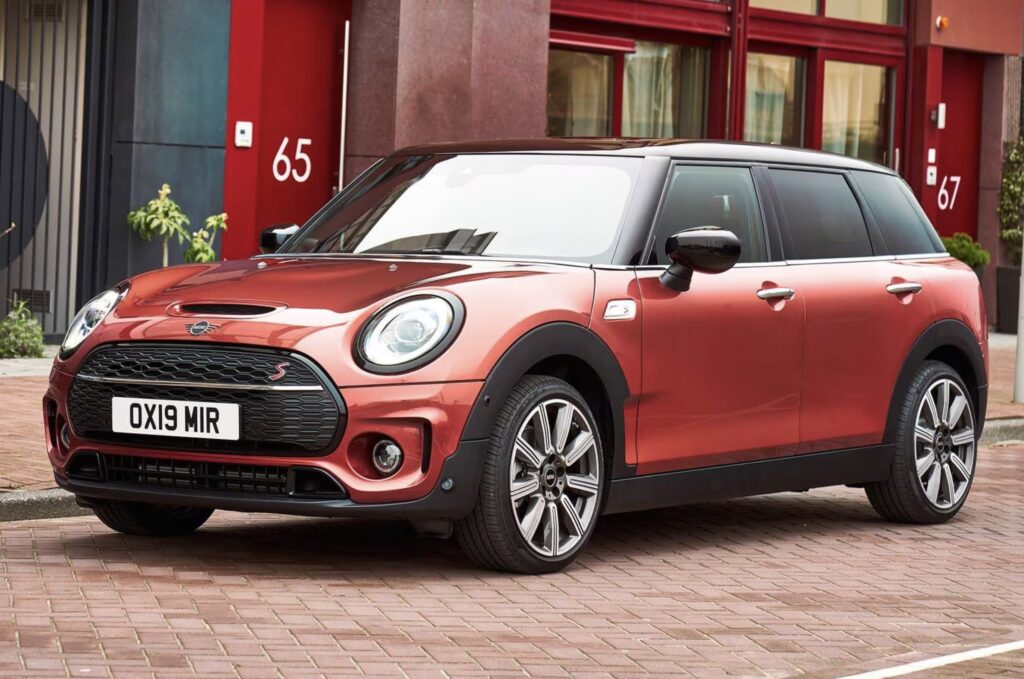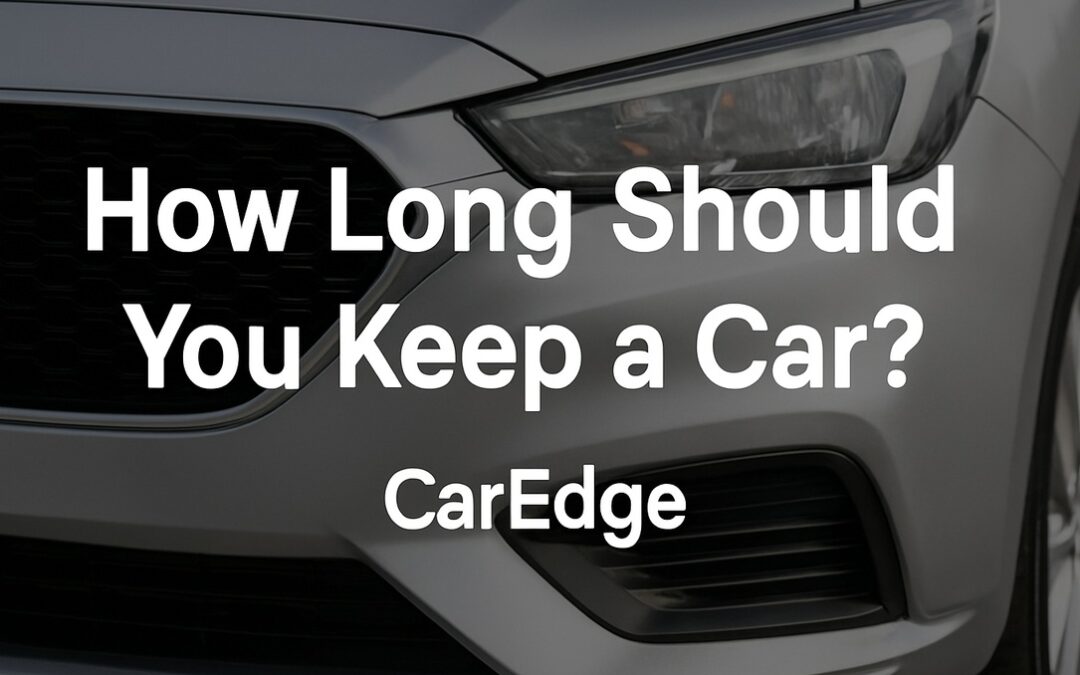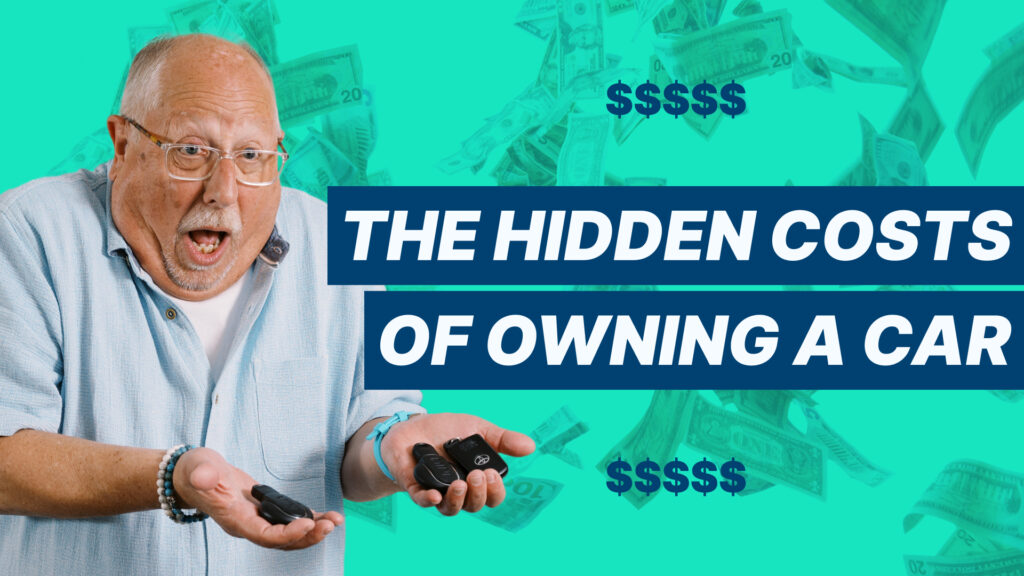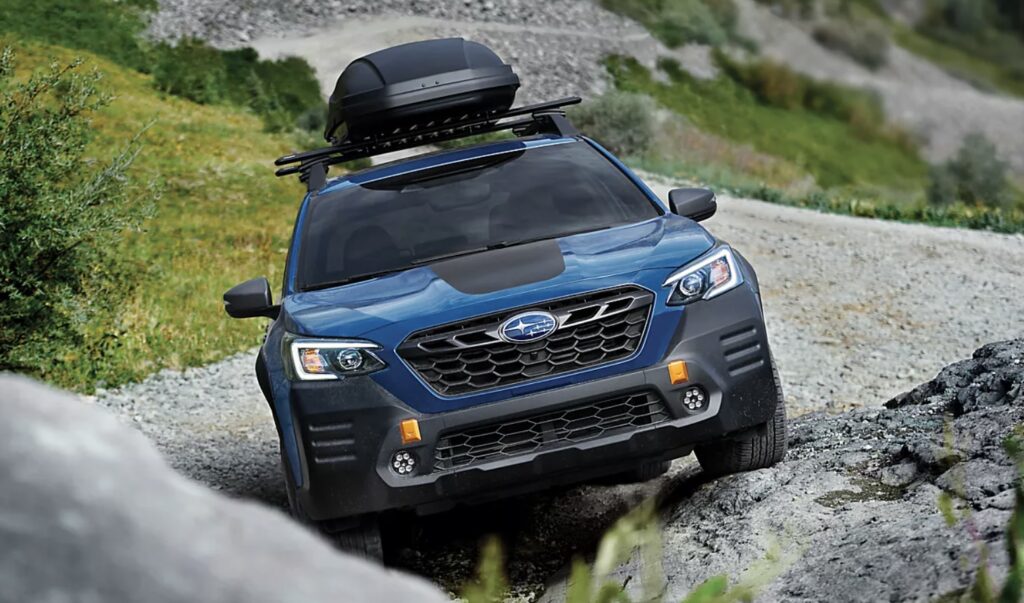CarEdge saved me over 4,500 dollars on a brand new Honda Pilot. I can't say thank you enough.
Price intelligence
Find a wide range of vehicle listings with market insights on new and used listings near you.


Help us personalize your CarEdge experience — it only takes a second.
Your answers help us personalize your CarEdge journey — we’ll follow up with tips and next steps that match your buying timeline.

It’s the end of the road for these familiar faces. As automakers shift priorities toward SUVs and electric vehicles, several long-running nameplates are quietly exiting stage left. Some have already ended production. Others are nearly sold out. Whether you’re a nostalgic fan or a bargain hunter, this summer is your last chance to drive home these cars before they’re gone for good.

Remaining inventory nationwide: 54
Production has ended for the Audi A4, as Audi shifts focus toward larger sedans and EVs. The A4 is effectively being replaced by the larger and sportier Audi A5 and S5 models. With Volkswagen Group’s uncertain EV strategy and financial struggles, streamlining the lineup played a role in the decision.
See the last A4 listings before they’re gone.

Remaining inventory nationwide: 3,600
As Cadillac pivots to electric vehicles like the Lyriq, Optiq, and Vistiq, models like the XT4 and XT6 are being discontinued. Production ceased in January 2025, so today’s inventory is all that’s left. At current selling rates (81 days of market supply), the last XT4 will be sold in August or September of this year.
See the last XT4 listings before they’re gone.

Remaining inventory nationwide: 2,061
Following 61 years as a classic American-made car, the last Malibu rolled off the assembly line in November 2024. In May, there were just 2,061 copies of the Malibu left for sale. With just 49 days of market supply, it’s likely that the last brand-new Malibu will find a home sometime in July. Perhaps a lucky museum will see the value and add one to their collection.
See the last Malibu listings before they’re gone.

Remaining inventory nationwide: 17
After 55 years and 1.1 million cars sold, the MINI Clubman ended production back in February 2024. In May 2025, 17 Clubmans remained unsold. Even as a critically endangered species, they’re slow to sell. If you want to claim one of the last Clubmans ever, you could probably get your hands on one over the next few months.
See the last Clubman listings before they’re gone.

Remaining inventory nationwide: 287
You’d be hard pressed to find many truck fans who will miss the Titan, but if you’re among this rare breed of Nissan aficionados, act fast as only 287 Nissan Titans remain unsold. At current selling rates, they’re on track to be extinct sometime in July.
See the last Legacy listings before they’re gone.

Remaining inventory nationwide: 4,615
Subaru has sold 1.3 million copies of the Subaru Legacy since launching the all-wheel drive sedan back in 1989. As the first Subaru model made in America, the Legacy has a special place in the hearts and minds of Subaru fans. Subaru previously announced that production of the Legacy would end sometime this spring. Although over 4,000 remain on dealership lots, it’s a relatively quick seller. At current selling rates, this Subaru sedan will be gone by late summer.
See the last Legacy listings before they’re gone.

Remaining inventory nationwide: 550
Volvo sales have been slowing over the past few years, and the S60 sedan has become a casualty of this trend. The S60 was built in South Carolina, which is now home to the 2025 Volvo EX90 SUV. Volvo will continue to build the S90 in China for other markets, but there are no plans to import them to the U.S. market.
See the last S60 listings before they’re gone.
A handful of other nameplates will also vanish after 2025, but remain widely available for now. The Nissan Versa is one such example. Want to see what else is going away by 2026? Check out our full list of cars being discontinued this year.
As always, be sure to shop smart with CarEdge’s free tools and local market insights. Looking to have an expert negotiate car prices on your behalf? We’ve got the perfect solution.
Happy summer car shopping!

Thinking about holding onto your car for the long haul? You’re not alone. In today’s car market of rising prices and rapid depreciation, many drivers are wondering whether it’s smarter to stick with the car they already own.
At CarEdge, we believe informed decisions save you thousands. Here’s what you need to know before deciding whether to keep your vehicle for longer, or start fresh with something new.

New cars lose 20–30% of their value in the first year alone. By keeping your car longer, you avoid taking that financial hit repeatedly. Plus, you won’t be shelling out for sales tax, registration fees, or dealership add-ons every few years. Insurance costs also tend to drop with older cars. This is especially if you drop comprehensive or collision coverage once the car’s value declines significantly as the miles add up.
Check out our free cost of ownership data
Most auto loans are paid off in 3–6 years. If you hold onto the car after that, you’ll enjoy years of driving without a monthly payment. Having a paid-off car means freeing up cash for other priorities, like savings or paying down debt.
You know your car. Its quirks, service history, how it drives in snow or rain—there’s no learning curve. That trust and comfort can go a long way in peace of mind, especially when you’ve maintained the car well.
Even the greenest EV has a carbon footprint from manufacturing. Holding onto your current car—even if it’s not electric—can be more environmentally friendly than replacing it with a new one every few years.
Buying a car can be a hassle. Keeping your current car means no time spent researching new models, test driving, negotiating prices, or dealing with trade-ins. It’s one less thing to worry about.

Even well-built cars eventually wear down. Between years 8 and 12, expect bigger-ticket repairs like suspension work, HVAC issues, or transmission problems. Costs can vary dramatically depending on the make and model, but reliability becomes less predictable.
See maintenance rankings by make and model
Newer vehicles often come with advanced safety features like automatic emergency braking, adaptive cruise control, blind spot monitoring, and more. Your old ride might not have these, which can make a big difference in both safety and comfort.
Seats wear out. Touchscreens lag. The cabin might feel outdated or less comfortable over time. Even if the engine runs strong, the driving experience may start to feel more like a chore.
After 10 years, most vehicles have very little resale value. This is especially true for cars with well over 100,000 miles on the odometer. In contrast, if you sell after 5 years, you might still recover 40–60% of the original price. If you plan to trade in later, timing matters.
We’ve got plenty of free depreciation tools to keep you informed.
If you own an EV, charger standards and technology may evolve. For instance, early Nissan LEAF owners are encountering challenges finding compatible charging these days. Even gasoline vehicles might also face limitations as fuel blends change or emissions standards tighten. An older car could eventually feel outdated or even unsupported.
Let’s say you buy a $35,000 car.
Over 10 years, buying two newer vehicles could cost $8,000 to $15,000 more than keeping one car the whole time, depending on the model, insurance, taxes, and maintenance needs.
If your car is still safe, reliable, and not draining your wallet in repairs, holding onto it a few more years is often the smartest financial choice. On the other hand, if maintenance costs or safety concerns are piling up, it may be time to move on.
Need help figuring out whether your current car is worth keeping?
👉 Check out the CarEdge Value Tracker, and know when it makes sense to sell.
Or, explore how long-term ownership compares to financing something newer with our full Cost to Own Rankings.

Subaru just became the latest automaker to announce price hikes—and it likely won’t be the last. As new tariffs and 2026 model-year pricing updates collide, car shoppers across the U.S. are seeing prices creep higher by the week. But there’s still a window of opportunity: Subaru’s Memorial Day deals include 0% APR offers and below-average financing on top models, and similar incentives from rivals like Tesla and Chevy are heating up too.
If you’re planning to buy a new car this summer, now may be your best chance to lock in a deal before the next round of price hikes hits.

Subaru of America is the latest automaker to raise vehicle prices as the cost of doing business rises—thanks in part to the recently imposed auto tariffs.
As first reported by Reuters, Subaru confirmed on May 19 that it’s increasing prices on several popular models, citing “current market conditions” and the need to “offset increased costs while maintaining a solid value proposition.” While the company avoided directly blaming tariffs, the timing lines up with widespread price adjustments across the industry as import taxes take a toll.
According to a dealer bulletin obtained by Reuters, the price increases will range from $750 to $2,055 depending on the model and trim. The Subaru Forester, which is already a top seller and widely imported, is among the most affected—prices will rise between $1,075 and $1,600. These new sticker prices are expected to hit dealership lots starting in June 2025.
Subaru imports roughly 45% of its U.S.-sold vehicles, according to S&P Global Mobility, making it particularly vulnerable to the 25% tariffs the U.S. now places on imported vehicles.
Subaru’s latest price hike is just the beginning. Across the industry, automakers are facing a one-two punch: steep new tariffs on imported vehicles and parts, combined with 2026 model-year price increases that are rolling out ahead of schedule.
While Subaru didn’t directly cite tariffs in its statement, the timing speaks volumes. The Trump administration’s 25% tariff on imported vehicles is already prompting automakers like Ford and Subaru to raise sticker prices to protect shrinking margins. And with almost half of Subaru’s U.S.-sold vehicles imported, the brand is especially exposed.
At the same time, many automakers are finalizing pricing for incoming 2026 models, which typically carry higher MSRPs. In many cases, even 2025 models still sitting on dealer lots are getting mid-cycle price bumps. That means car buyers in late spring and early summer are likely to see both tariffs and new model-year pricing converge, making it harder to find value on new vehicles.
Subaru may be the latest to raise prices—but they won’t be the last. As inventory updates in June and July, expect other automakers to quietly follow suit. If you’re planning to buy a new car this summer, shopping sooner rather than later could save you hundreds—or even thousands.
See the best Memorial Day sales, from 0% financing to huge cash offers.

If you’re in the market for a new Subaru, now is the time to act. Subaru is raising prices by as much as $2,055, and according to the automaker’s website, MSRP changes will roll out in June, and inbound inventory is likely to be impacted. While older inventory on dealer lots may not be affected, it remains unclear how quickly these price increases will be reflected in what shoppers actually pay once June arrives.
For now, Memorial Day deals are still live, including 0% APR offers on some of Subaru’s most popular models.
And while Subaru’s incentives are strong, some competitors are fighting hard for buyers this Memorial Day—especially as tariffs disrupt pricing across the board.
Here’s how Subaru’s best offers compare to the competition:
Still, Subaru’s 0% for 72 months on the 2025 Solterra and 2024 WRX stand out as some of the longest zero-interest terms available anywhere. With price hikes looming, now is the time to take advantage of Subaru’s May incentives.

Subaru’s price increases are just the start of what’s shaping up to be a more expensive summer for new car shoppers. With tariffs, MSRP updates, and tightening incentives, it pays to shop smart—and fast. Whether you’re considering a Subaru or cross-shopping with competitors, the best deals won’t last long.
Before you head to the dealership, get the facts with CarEdge:
Buy with confidence—and save more—with CarEdge on your side. Learn more about how we can help buyers of every budget.
![Every 0% APR Financing Offer This Memorial Day [2025]](https://caredge.com/wp-content/uploads/2025/05/zero-percent-financing-memorial-day-offers-1080x675.jpg)
Memorial Day weekend is still one of the biggest car shopping events of the year, but let’s be honest—2025’s deals aren’t what they used to be. Automakers are scaling back the big incentives we got used to in years past. However, for buyers with solid credit, there are still some great financing offers to take advantage of—specifically, zero percent APR deals.
As of this Memorial Day, there are 16 brands offering 0% APR financing on select models. Some are for 36 or 48 months, others stretch as long as 72 months. Below, we break down every zero percent APR deal available in May 2025, organized alphabetically by brand.

Learn how CarEdge can make car buying easy as can be with free and premium car buying help. Don’t go it alone in today’s market!
If you’re shopping for a new car this Memorial Day, zero percent financing deals are where the real savings are—especially with interest rates still as high as they are. These APR offers can save you thousands over the life of your loan, but keep in mind that most are limited to well-qualified buyers and specific models.
📍 Want to see what’s available near you?
Check local listings and financing deals with CarEdge to find your best options.
💬 Need help negotiating your financing terms?
Let CarEdge’s Car Buying Experts handle the heavy lifting. Learn more here →

